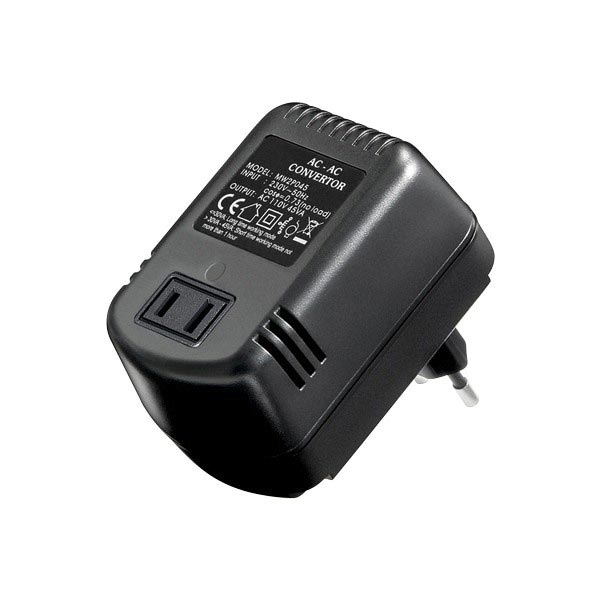
- #220 volt to 110 volt converter how to
- #220 volt to 110 volt converter install
- #220 volt to 110 volt converter portable
(The two outlets will most likely be far apart.) Use an extension cord of appropriate length, as needed.
#220 volt to 110 volt converter how to
How to Use a Quick 220 ® Systems 120v to 240v Power Converter? (220v to 110v, step-down converters are usually used for international travel.) Quick 220 ® Systems sell easy-to-use 110V to 220V converters that combine two 110V outlets into one 220V power source. Be mindful of whether you are purchasing a step-down or a step-up converter. You can buy a voltage converter from most stores that sell electronics online and in person. Where Can I Get a 110v to 220 -240V Converter? Should I use a 220-240V Converter or a Transformer?Ĭonverters are lighter, more compact, affordable and support higher net wattages than high wattage transformers. It's important not to be confused with a 240v step-down converter, which takes an existing source of 240V and converts it into a 120V power source. As a result, the 240V step-up converter can power a wide range of machinery and equipment, for homes, offices, and more. Plus, it's an easy DIY installation!īy connecting the converter to two independent sources (different phases) of 120V, the 240V step-up converter creates one source of 240V power. In many situations, it is simpler and more cost-effective to convert two 120V outlets into a source of 240V without modifying existing circuits. Instead, we suggest converting the power using a step-up 120V to 220-240V converter.Ī step-up 120V to 220-240V converter is another alternative to converting 120V to 220-240v. So, we do not advise hiring an electrician. But unfortunately, that'll cost you hundreds to thousands of dollars, and working with contractors can be a hassle.
#220 volt to 110 volt converter install
The obvious option is to hire an electrician to install the 240V outlet. Not to mention, that kind of skilled work comes at a steep price. Making this change in your home, apartment, or office often requires extensive rewiring and, most likely, a building inspection. So, what if your device requires a 220V outlet, but none is in sight?Ĭonverting a 110V outlet to a 220V outlet requires an electrician's skill. In addition, if the device or appliance has a motor, it can become damaged. In that case, it will only receive half of the necessary energy to function, causing poor performance. Suppose a device or appliance requiring 220V is plugged into a 120V outlet. It's ill-advised to connect an appliance requiring 220 or 240 volts to one of these outlets because it can damage or destroy the device. In the U.S., Canada, and neighboring countries, standard household outlets run at 120 volts. You need to use a 240-volt appliance with the required equipment or power outlet.
#220 volt to 110 volt converter portable
While most consumer goods, including portable electronics and most appliances, run on 120V power, some demanding more power rely on 240-volt electrical systems.

This includes clothes dryers, ovens, ranges, air conditioners, heavy-duty power tools, and compressors. However, some larger appliances require 240V outlets. Most consumer goods and electronics use electricity from one of the 120-volt lines. Then, it splits into two 120-volt halves at the main circuit breaker panel, called phases. First, electricity flows into your home at about 240 volts. The electrical power supplied to most homes in the United States, and Canada is a split-phase system. The term and use of 110V and 220V are still common.ġ20 and 240 Volts – Residential Electricity However, in many regions, voltages have gradually increased from 110V to the current standard of 120/240V at 60 Hz. “110 volts" and "220 volts" represent an older standard for electrical wiring in the United States and Canada. With our ultimate guide to 120v to 240 Converters, you'll find everything you need to power up in no time at all. 240V step-up converters make it easy to power electrical appliances without upgrading your existing circuits. Lucky for you, there's an easy and affordable solution to this power problem, 120V to 240 Converters. You need 240V's, and installing that circuit into your building isn't cheap. If you have a large room-sized air conditioner, horticultural lights, high-end shop tools, or a tanning bed, the 120V circuits in most homes and offices aren't enough. Sometimes a new appliance needs more wattage than you have available for the home or the office.


 0 kommentar(er)
0 kommentar(er)
